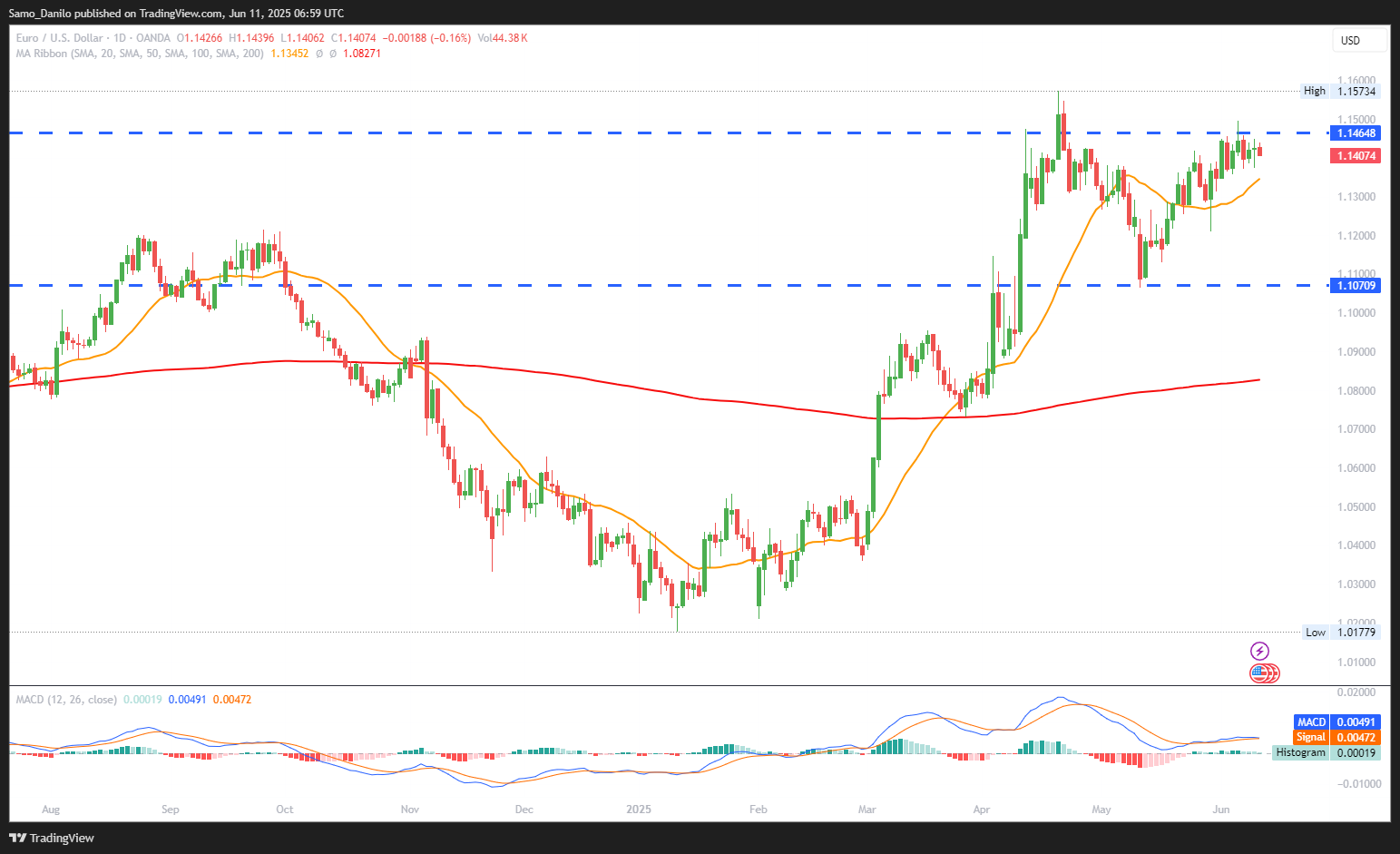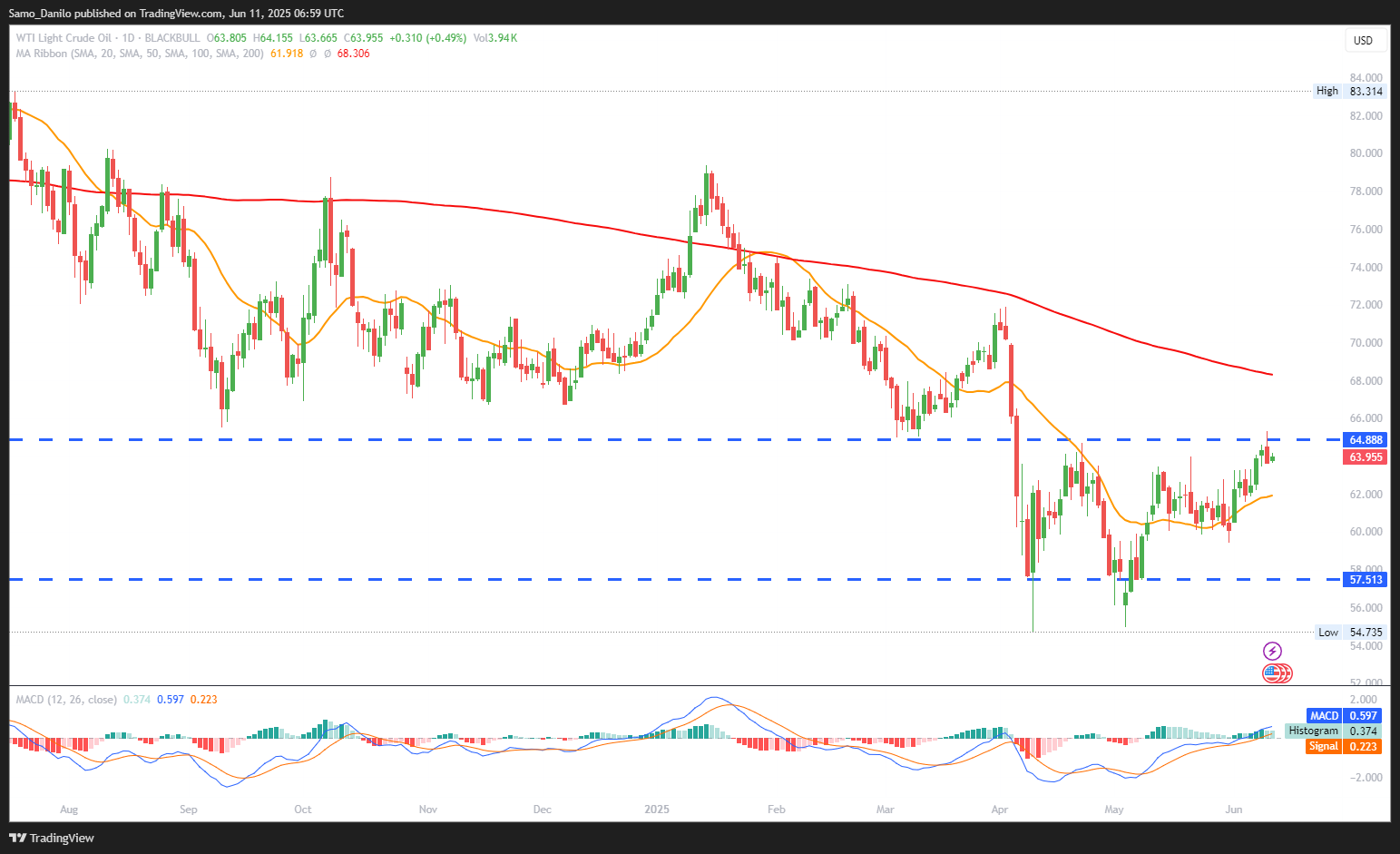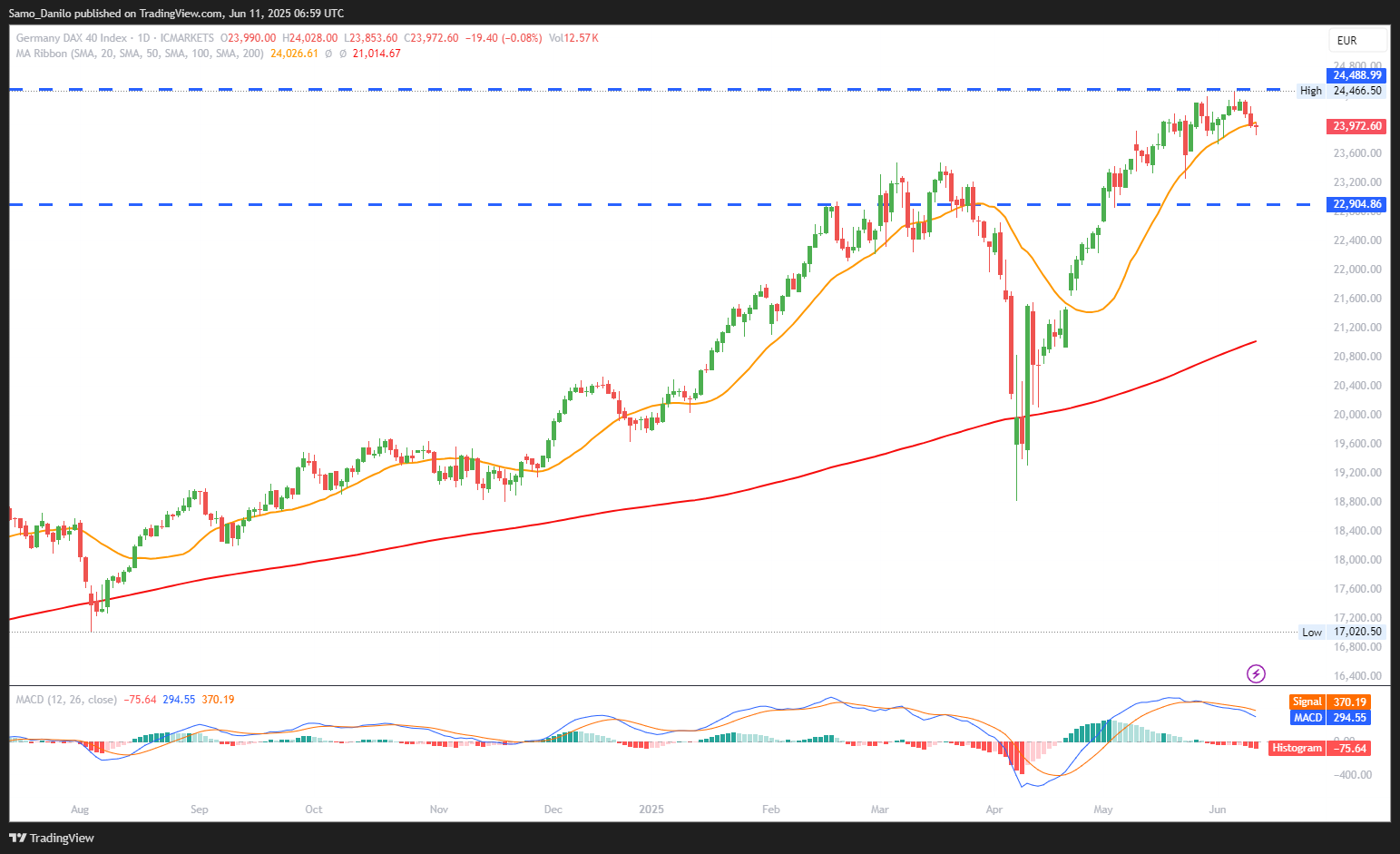EURUSD
- EUR/USD Price: The EUR/USD pair slipped to around 1.1400 during European trading on Wednesday, giving up gains from the previous two sessions. Traders are exhibiting caution ahead of major macroeconomic data and evolving central bank commentary.
- ECB Signals: The European Central Bank (ECB) last week signaled that the end of the rate-cutting cycle is nearing.
- ECB's Rehn: ECB policymaker Olli Rehn said on Tuesday, “We will take decisions meeting by meeting.” Must avoid complacency over inflation outlook. Must focus on keeping inflation expectations at 2%, Rehn added.
- ECB’s de Galhau: ECB’s Francois Villeroy de Galhau echoed Rehn’s sentiment, stating the ECB will remain “pragmatic” and data-driven. This underscores a wait-and-see approach, balancing lingering inflation concerns with evolving economic conditions.
- US-China Trade: Commerce Secretary Lutnick mentioned progress toward resolving disputes with China, including a framework aligned with the Geneva Consensus. These developments bolstered the US Dollar, as improving trade prospects typically support global risk appetite and USD inflows.
Closing statement: EUR/USD is currently under mild pressure, caught between ECB's cautious optimism and a strengthening US Dollar on improved trade sentiment. The pair’s next directional move will hinge on incoming inflation data and central bank tone consistency.
GBPUSD
- GBP/USD Price: The GBP/USD pair extended its losses to around 1.3475 during Wednesday’s European session. The British Pound remained under pressure following disappointing domestic labor data, while the US Dollar gained on solid trade and inflation outlook.
- UK Jobs Data: Markets reacted bearishly to Tuesday’s soft UK employment figures, which raised the probability of two Bank of England rate cuts in 2025. This has weakened the Pound’s appeal as investors adjust to a more dovish policy trajectory.
- US-China Trade: Bloomberg reported that the US and China reached a preliminary deal on implementing the Geneva Consensus. This boosted confidence in trade normalization, further strengthening the US Dollar on improved geopolitical sentiment.
- Chinese Official: China’s Vice Commerce Minister Li Chenggang stated that talks with the US have been “rational and candid,” adding that a negotiation framework will be presented to Chinese leadership, which enhances hopes of policy coordination and de-escalation.
- CPI Report: Investors are closely watching the upcoming US Consumer Price Index (CPI) release. While headline inflation is expected to rise only modestly due to lower gasoline prices, Trump’s import tariffs could be fueling core inflation, potentially influencing Fed outlook.
Closing statement: The GBP/USD pair remains under pressure amid growing expectations for BoE rate cuts and resurgent USD strength on the back of trade optimism and inflation risks. Near-term direction will depend on US inflation data and UK macro signals, with technical support likely tested below 1.3450 if bearish momentum persists.
XAUUSD
- XAU/USD Price: Gold prices regained upward momentum during Wednesday’s European session, following a day of muted range-bound movement. Safe-haven demand strengthened amid renewed global risks and looming US inflation data.
- Trump Tariffs: A US federal appeals court allowed Trump’s “Liberation Day” tariffs to remain in effect temporarily, reversing a lower court’s previous block. The legal support for these tariffs has re-intensified trade-related uncertainty, offering a boost to gold as investors seek safety.
- Conflict in Ukraine: Russia ramped up attacks on Kharkiv, rejecting any unconditional ceasefire. The persistent conflict in Eastern Europe continues to elevate geopolitical tensions, supporting a bullish gold narrative.
- Middle East News: Israel’s continued bombardment of Gaza has further fueled regional instability. These developments have amplified global safe-haven flows, providing additional upside for the yellow metal.
- US CPI Data: Markets await the release of the May US Consumer Price Index (CPI). Headline inflation is projected to rise 0.2%, with core inflation expected at 0.3%, potentially reflecting the first inflationary impacts of the latest US tariffs, which could influence Federal Reserve policy direction.
Closing statement: Gold remains well-supported by intensifying geopolitical conflicts and renewed trade tensions, with upcoming US inflation data likely to inject further volatility. A hotter-than-expected CPI print could reinforce gold’s safe-haven appeal, while signs of moderating inflation may cap gains in the short term.
CRUDE OIL
- Crude Oil Price: West Texas Intermediate (WTI), the US crude oil benchmark, is trading around $63.90 during the European trading hours on Wednesday.
- API Data: The API reported a modest 370,000-barrel draw in U.S. crude inventories for the week ending June 6, sharply down from the prior week’s 3.3 million-barrel decline. The lower-than-expected draw raises concerns over demand momentum heading into summer.
- Iran Nuclear Deal: Iran signaled a forthcoming counterproposal to the latest U.S. nuclear deal framework, calling the current offer "unacceptable." Any progress in talks could lead to a lifting of sanctions, bringing more Iranian barrels to market and potentially limiting oil’s upside.
- OPEC Outlook: OPEC Secretary General Haitham Al Ghais reiterated that oil demand growth shows no signs of slowing, referencing forecasts for a 24% rise in global energy needs by 2050. This underpins long-term support for prices, despite short-term volatility.
- U.S. Data: Focus now turns to the U.S. CPI release and the EIA inventory report, both due later Wednesday. Surprises in inflation or crude stockpiles could sharply shift sentiment, influencing oil's direction for the rest of the week.
Closing statement: WTI remains under mild pressure amid near-term supply and demand uncertainties, though OPEC’s bullish demand projections and geopolitical developments offer a supportive longer-term backdrop. Key U.S. data will likely set the tone for the next move.
DAX
- DAX Price: The DAX fell 0.77% on Tuesday, closing at 23,987, and extended Monday’s modest losses. This marked the first close below 24,000 since June 2, reflecting mounting investor caution despite favorable trade headlines.
- Auto Stocks: German automakers outperformed, with Porsche (+1.25%) and Volkswagen (+1.16%) leading the rebound on renewed optimism over US-China trade progress. Gains were also seen in BMW, Mercedes-Benz Group, and Daimler Truck Holding, suggesting selective sector strength.
- US-China Trade: Markets are expected to respond on Wednesday to the positive outcome from high-level US-China negotiations. Both sides reportedly agreed on a framework to stabilize trade relations, supporting a risk-on tone for exporters and industrial sectors.
- Domestic Investment: Analysts flagged that Germany’s investment push may create long-term structural tailwinds, particularly for MDAX and SDAX-listed companies, which are more domestically focused and manufacturing-intensive compared to DAX constituents.
- India-US Trade: Separately, India and the US advanced in four days of trade talks, signaling a broad-based easing of trade tensions globally. While indirect, these developments support sentiment for export-driven economies like Germany’s.
Closing statement: The DAX faces technical pressure below 24,000, yet sector-specific strength in autos and broader global trade progress offer reasons for cautious optimism. Mid-cap German equities may see outsized benefits from both government stimulus and improving external demand.




